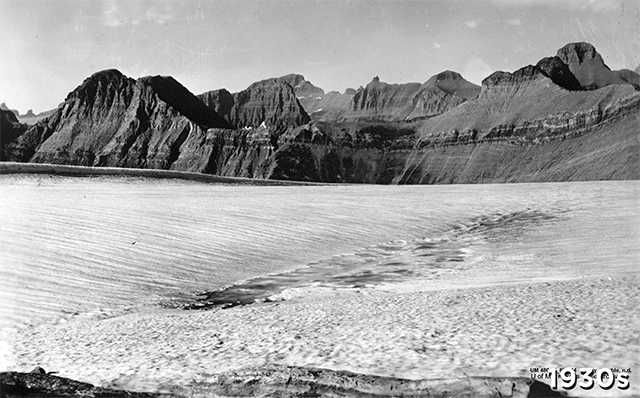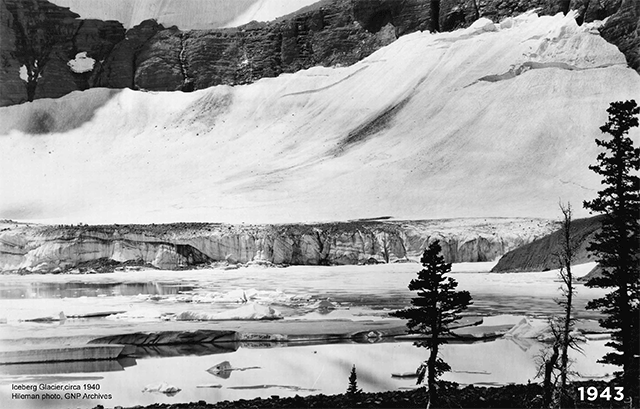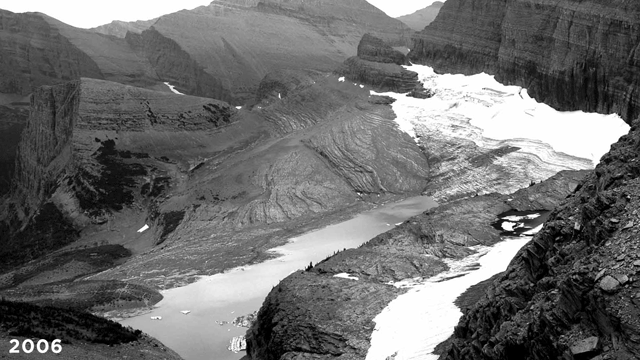When Glacier National Park was dedicated in 1910, this stunning span of the Rocky Mountains on the Montana-Canadian border counted over 150 thick, morphing ice sheets that gave the park its name. One very warm century later, there are only 26 glaciers here. And by 2030, scientists warn, that number could be zero.
One computer-based climate model by USGS scientists predicts that many of the park’s largest glaciers will be gone by 2030. It may even be sooner, as many of the glaciers are retreating much faster than first anticipated.
This ongoing report by the USGS has been studying the dramatic retreat of the glaciers in Glacier National Park as a notable way to examine the larger changing climate. Due to the extremely sensitive nature of the glacier itself, which is more like a living, moving organism than most other natural features, glaciers act as a kind of visual indicator for long-term weather patterns.
Glaciers require a certain number of below-freezing days and inches of snowfall annually in order to stay healthy. Over the last few decades, the mean temperature in the Glacier National Park area has risen about 1.33C and the predominant form of precipitation has been rain, causing the dramatic melt-offs without any chance to for the glaciers to reform.

Although scientists have been examining the park using satellite information and other scientific data, it turns out the the retreat of the glaciers has been well-documented with another more low-tech method. The USGS’s Repeat Photography Project has been working since 1997 to restage historic photos taken of glaciers a century ago as a way to compare ice levels.
You can scroll through dozens of then-and-now images of what were once massive ice fields, originally captured by photographers who were working to publicize the park’s beauty. In almost every instance, the after photos — which were taken at the same time of year, after the surrounding snow had melted — feature barren fields of vegetation where glaciers once existed.

Losing Glacier’s glaciers is not just sad for the park. It’s likely a larger indicator of what’s happening in alpine areas around the world. Glaciers also play an especially important role in the ecosystem because they act as both water reservoirs and temperature regulators for large regions, which can cause drought or wipe out certain species at lower elevations. Glacier National Park might be a misnomer in a few decades, but the impact will be felt on a much larger scale. [USGS, New York Times]
Pictures: USGS’s Repeat Photography Project
